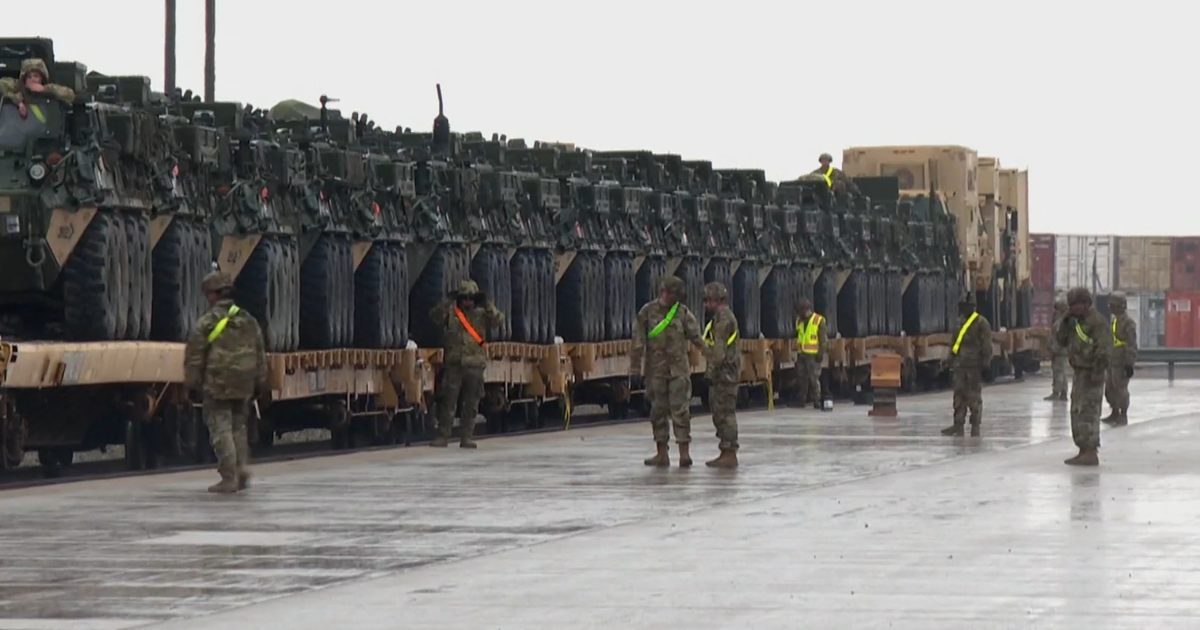El Paso, Texas — President Trump last week authorized the military to take control of a 700-mile-long and 60-foot-deep strip of federal land along the U.S.-Mexico border stretching from California to New Mexico in an order that claims the U.S. is “under attack from a variety of threats.”
It’s an attempt to get around the prohibition on using the military for domestic law enforcement because the land will now be an Army base.
Ahead of the order, the Army on April 5 delivered more than 50 armored Stryker fighting vehicles to Fort Bliss in El Paso, Texas.
Designed for the battlefield, they are a centerpiece of Mr. Trump’s plan to seal the southern border.
“No weapons system, we’re just using the capability of the cameras for scanning and detecting,” said Sgt. 1st Class Carlos Zamorra, one of the soldiers using thermal and infrared cameras on the Stryker, watching for the tiniest movements along the border.
The Stryker can detect even “a little mouse up to like a mile out,” Zamorra said.
With the Strykers and soldiers, Mr. Trump is creating a border barrier that is more than just a wall. It means migrants will be crossing from Mexico into a military installation, allowing soldiers to make apprehensions. Until now, that job has been reserved for U.S. Border Patrol and state and local police.
The Strykers can carry as many as nine people. The ones that are at Fort Bliss have been stationary, but they can go on patrol if that is something Border Patrol needs.
Immediately after beginning his second term, the president declared a national emergency at the nearly 2,000-mile-long southern border and ordered the Defense Department to deploy troops there. About 7,000 Marines and Army soldiers have so far been sent to secure it.
Border Patrol agent Orlando Marrero-Rubio explains that even though southern border crossings have plummeted drastically since January, agents still need the extra observational help provided by the Strykers.
“Yes we do, because the terrain is very tricky,” Marrero-Rubio said.
Marrero-Rubio showed CBS News how improved access to busy crossing zones have helped drastically cut border crossings before the Army arrived.
There were about 7,200 illegal border crossings during the entire month of March, according to U.S. Customs and Border Protection data. In 2023, there were some days when more than 10,000 people crossed.
And on a recent morning on Mount Cristo Rey in Sunland Park, New Mexico, where foot trails have been worn into a hillside, a CBS News crew didn’t see a single person trying to cross.




